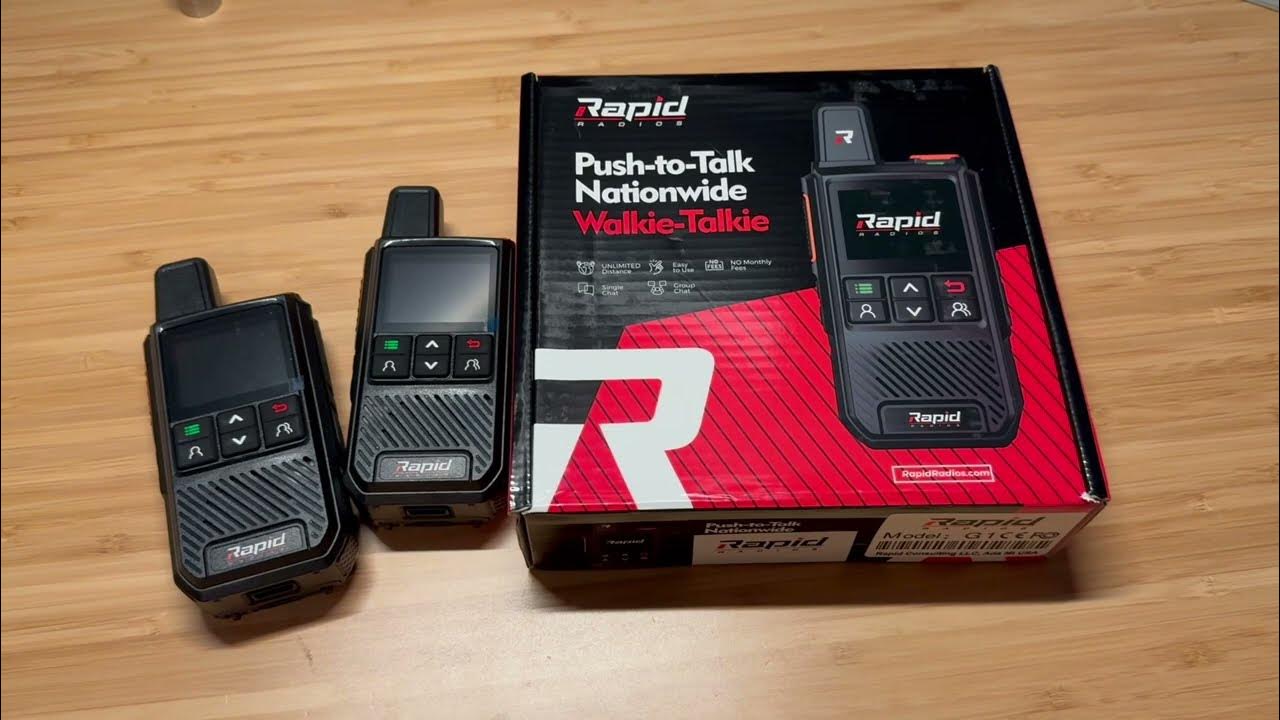Relying on rapid radios is a smart decision. When it comes to consistent, reliable communication, you can’t get much better than rapid radio walkie-talkies. Regardless of environmental issues like power outages or cell tower failures, you’ll receive nationwide communication and service.
Since rapid radios utilize all available cellular networks, connectivity is preserved, regardless of cell tower failures and other interruptions that typically break the connection on older walkie-talkies and cell phones. Plus, when these issues occur, they automatically switch to the next provider, preventing performance breakdown. With a built-in mechanism to protect against connection failure, you can count on rapid radios to function in harsh conditions and in areas where traditional talk radios and cellphones would lose signal.
Unlike cell phones and traditional radios, rapid radios rely on multiple networks rather than a single provider. This prevents the limitations of connection when cell towers go down. For more information on the answer to “Do rapid radios really work?” in various scenarios,” read on.
The Answer To “Do Rapid Radios Really Work?” Is Yes.
Rapid Radios uses POC technology. This makes it possible for people to communicate over vast distances; this is compared to older walkie-talkies, which use RF transmission instead. Rapid radios operate with cloud-based systems.
This means that users are covered so long as they are in the cellular coverage range (and this is nearly the entire U.S.). So, if you’ve been wondering, “Do rapid radios really work?” The answer is yes. Users can stay connected even all across the country.
PTT Technology Makes Use In Tough Situations Easier.
In addition to staying connected, the PTT technology (push-to-talk) makes using these radios seamless in harsh situations. Emergency responders, families hiking in the woods, and other situations where you may not have your hands completely free are no problem for Rapid radios. The PTT button is easy to use, allowing users to connect even when preoccupied or in crisis mode. If you were questioning, “Do rapid radios really work?” now you know that yes they do, even in difficult situations.
The Design Eliminates Restrictions And Boosts Connectivity.
Unlike traditional walkie-talkies, Rapid radios are not restricted by rough terrain or radio interference, and the connection spans large distances. All of these previous limitations are protected against due to the advanced communication system backing these devices. If you’re asking, “Do rapid radios really work?” consider that the system combines the internet and multiple cellular networks for communication across large distances. In other words, yes, they really work, and they ensure that a stable connection is maintained nationwide.
The Proof Is In The Technology.
It might be hard to believe that you can count on your walkie-talkies to keep you and your group connected, but the proof is in the technology. Today, you can eliminate the hurdles of close-range walkie-talkies by switching to advanced communication tools like Rapid Radios instead. Try them out for yourself so you can stop questioning, “Do rapid radios really work?” See for yourself that, yes, they do.
Hey, I’m Rahul Pandey, the mind behind the words you read here on Bststatus.com. I specialize in crafting engaging content across the worlds of crypto, tech, entertainment, and sports. With a deep passion for storytelling and a constant curiosity for what’s trending, I aim to bring fresh, insightful, and relatable content that keeps you informed and entertained all in one scroll.

